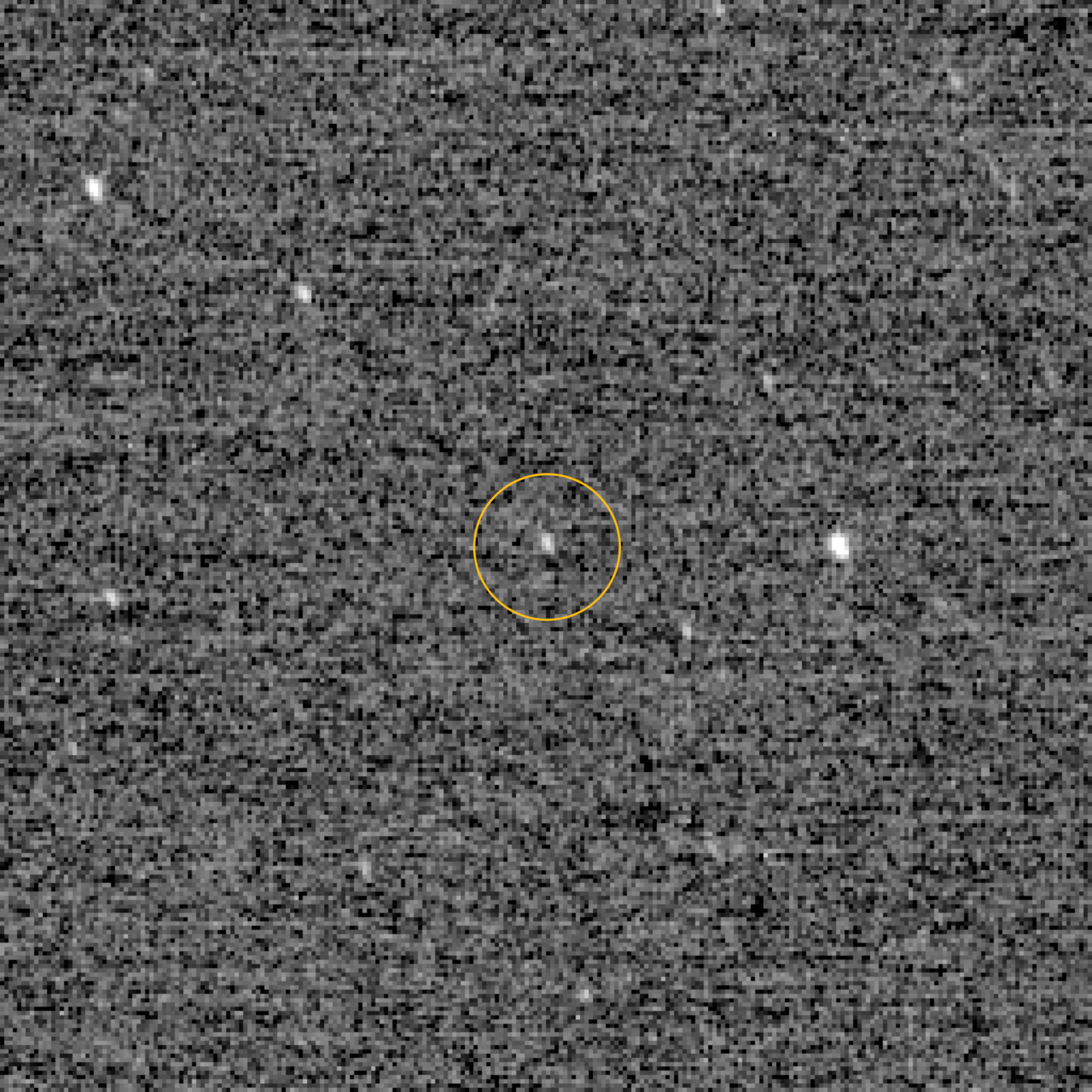How to Watch New Horizons' Ultima Thule Flyby on New Year's Day: A Webcast Guide
NASA's New Horizons spacecraft is about the make the most distant planetary flyby in the history of spaceflight, and you can follow the action live.
At 12:33 a.m. EST (0533 GMT) on Jan. 1, New Horizons will zoom past the small object Ultima Thule, which lies 1 billion miles (1.6 billion kilometers) beyond Pluto in the realm of icy bodies known as the Kuiper Belt.
The mission team will keep the public appraised of New Horizons' progress via a series of news conferences and updates over the coming days, all of which you can watch directly via the space agency, or via the Johns Hopkins University Applied Physics Lab, which manages the New Horizons mission for NASA. You'll also be able watch the events here at Space.com, courtesy of NASA TV and JHUAPL. [Ultima Thule Flyby! Our Full Coverage]
With NASA currently affected by a partial government shutdown, there was some early questions over how the agency would share New Horizons' Ultima Thule flyby progress with the public. But on Thursday (Dec. 27), NASA chief Jim Bridenstine assured the public the agency would webcast the historic event.
"Expect to see the @NASANewHorizons social media accounts continue to operate," Bridenstine wrote on Twitter. "The contract for these activities was forward funded. This applies to @OSIRISREx and NASA TV too. @NASA will continue to stun the world with its achievements!"

Here's the schedule:
Monday, Dec. 31:
Get the Space.com Newsletter
Breaking space news, the latest updates on rocket launches, skywatching events and more!
— 2 p.m. to 3 p.m. EST (1900-2000 GMT): News conference previewing flyby science and operations
— 3 p.m. to 4 p.m EST (2000-2100 GMT): Q&A with the New Horizons team
— 8 p.m. to 11 p.m. EST (0100-0400 GMT on Jan. 1): Panel discussion about the exploration of small worlds; flyby countdown events; mission updates
Tuesday, Jan. 1
— 12:15 a.m. to 12:45 a.m. EST (0515-0545 GMT): Countdown to encounter; real-time flyby simulations
— 9:45 a.m. to 10:15 a.m. EST (1445-1515 GMT): Live coverage of New Horizons flyby signal acquisition
— 11:30 a.m. to 12:30 p.m. EST (1630 to 1730 GMT): Post-flyby news conference
Jan. 2
— 2 p.m. EST (1900 GMT): News conference on flyby science results
Jan. 3
— 2 p.m. EST (1900 GMT): News conference on flyby science results
The New Year's Day flyby will break the distance record New Horizons set in July 2015, when it cruised within 7,800 miles (12,550 km) of Pluto and sent back the first-ever up-close images of that diverse and complex world.
New Horizons will buzz Ultima Thule much closer, coming within a mere 2,200 miles (3,540 km) of the roughly 23-mile-wide (37 km) object as people on the U.S. East Coast are ringing in the new year. And it's unclear what exactly the spacecraft will see; astronomers know very little about Ultima Thule, whose official designation is 2014 MU69. Indeed, it's unclear if Ultima is a single object or a close-orbiting pair.
Whatever New Horizons sees will doubtless intrigue scientists. They're eager to get a good look at Ultima, which is a pristine, deep-frozen relic from the solar system's planet-formation period — a type of body that has never been observed up close.
The Ultima Thule flyby will come just hours after NASA's asteroid-sampling OSIRIS-REx spacecraft slips into orbit around the space rock Bennu.
OSIRIS-REx officially arrived at the 1,650-foot-wide (500 meters) Bennu on Dec. 3, and mission team members have spent the last four weeks studying the space rock and prepping for orbital insertion. The caution is warranted, for this will be a tricky maneuver: no probe has ever orbited a celestial object as small as Bennu before.
Press releases and updates about OSIRIS-REx's activities and Dec. 31 orbital insertion will not be posted on NASA's website, because of the ongoing partial government shutdown. But these materials will be available at the mission website and at the University of Arizona's main news site. (The University of Arizona is home to OSIRIS-REx principal investigator Dante Lauretta and the mission's Science Processing and Operations Center.)
Short updates will also be available via OSIRIS-REx's Twitter (@OSIRISREx), Facebook (@OSIRISREx) and Instagram (osiris_rex) accounts.
Mike Wall's book about the search for alien life, "Out There" (Grand Central Publishing, 2018; illustrated by Karl Tate) is out now. Follow him on Twitter @michaeldwall. Follow us @Spacedotcom or Facebook. Originally published on Space.com.
Join our Space Forums to keep talking space on the latest missions, night sky and more! And if you have a news tip, correction or comment, let us know at: community@space.com.

Michael Wall is a Senior Space Writer with Space.com and joined the team in 2010. He primarily covers exoplanets, spaceflight and military space, but has been known to dabble in the space art beat. His book about the search for alien life, "Out There," was published on Nov. 13, 2018. Before becoming a science writer, Michael worked as a herpetologist and wildlife biologist. He has a Ph.D. in evolutionary biology from the University of Sydney, Australia, a bachelor's degree from the University of Arizona, and a graduate certificate in science writing from the University of California, Santa Cruz. To find out what his latest project is, you can follow Michael on Twitter.









